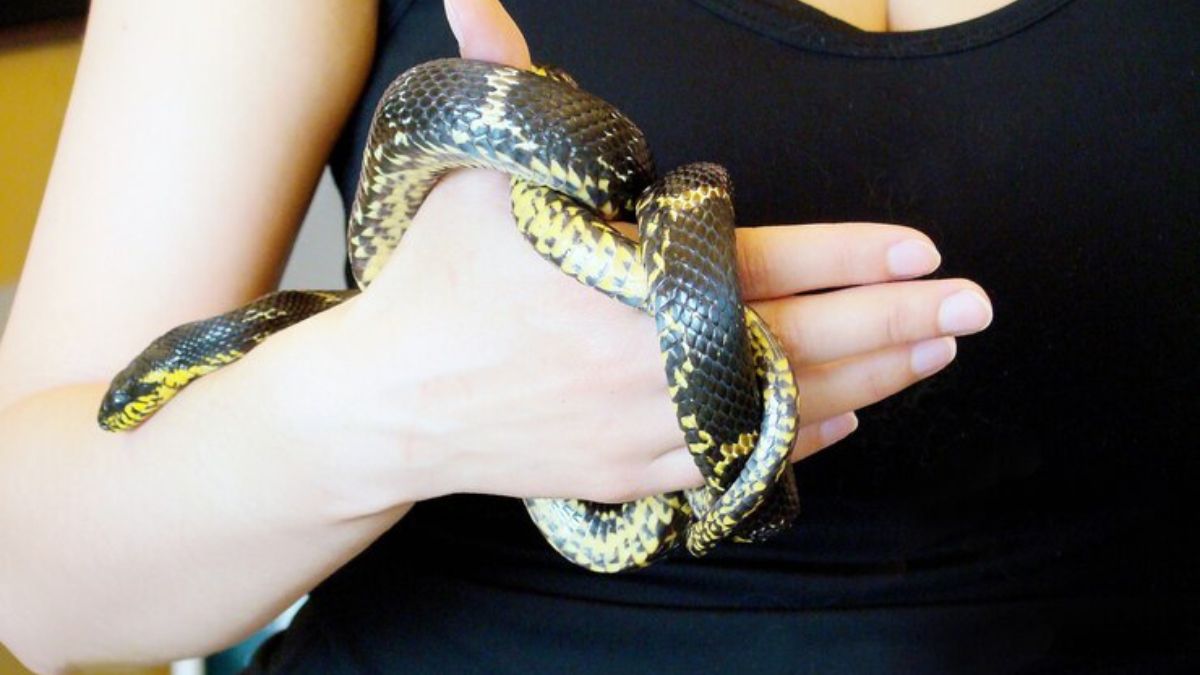PETS
Cat Hat Wearable Cat Tree: Enhancing Feline Comfort and Mobility

It can be difficult to provide cats with enough of climbing and exploring options, particularly for cat owners residing in limited places, because cats are notoriously playful and energetic. An ingenious cat hat wearable cat tree has emerged as the answer. With this one-of-a-kind creation, felines and their humans alike may enjoy all the advantages of a classic cat tree combined with the portability of wearable tech.
Benefits of a Cat Hat Wearable Cat Tree
The ease it provides is one of the main benefits of a wearable cat tree for cats. Cats may still enjoy climbing and perching on a wearable tree without taking up precious floor space, unlike with traditional cat trees. In addition to making better use of available space, this helps cats and their human friends form a closer relationship.
A cat cap that doubles as a cat tree encourages more movement and discovery for felines. They get the cerebral stimulation they require while engaging in their normal activities when given the opportunity to climb and perch at different heights. This can be particularly helpful for cats living indoors, since it can reduce tension and boredom.
Features to Look for in a Cat Hat Wearable Cat Tree
You should think about a few key elements while selecting a wearable cat tree for your feline friend. Picking a product with a solid build is the first step in making sure your cat is safe and secure. textiles that are both soft and sturdy, such breathable mesh and cozy textiles, are what you should be on the lookout for.
Because cats come in many forms and sizes, it’s crucial that their clothing be adjustable. It should be possible to tie the tree firmly without making it uncomfortable or limiting your movement. At last, think about if there are any supplementary safety measures, including materials that reflect light for use at night or integrated harnesses to avoid falls.
How to Choose the Right Cat Hat Wearable Cat Tree
Careful deliberation is required while choosing an appropriate wearable cat tree for your beloved feline companion. The best way to choose the right size and style for your cat is to take stock of its stature and habits first. A shorter, cozier form may be more appealing to a shy cat, while a taller, more energetic cat may necessitate a more robust tree with several tiers.
Look at how long the product lasts and how well it is made. Invest in a high-quality item that can last regular usage by reading reviews from other cat owners and seeking suggestions from reputable sources.
Setting Up and Using a Cat Hat Wearable Cat Tree
It is time to install and introduce your feline friend to your new wearable cat tree once you have selected the ideal one. Carefully follow the manufacturer’s directions to fix the tree and adjust it so it fits your cat.
Maintenance and Care
A regular maintenance schedule is crucial for the optimal health of your cat cap wearable cat tree. You might have to give the tree an occasional spot cleaning or give it a good hand wash to get rid of grime, hair, and smells, depending on the materials used. Trees also need frequent inspection for damage, such as unraveled threads or frayed seams, which should be addressed promptly.
Creative Ways to Use a Cat Hat Wearable Cat Tree
Even while a cat hat wearable cat tree mainly serves to provide cats somewhere to climb and perch, there are a ton of cool things you can do with it every day. Maybe your cat will like using it as a comfy bed to curl up in whether you’re at the office or just relaxing at home. The addition of goodies or toys hung from the tree can further inspire discovery and play.
More daring cat owners can choose from a plethora of do-it-yourself customizing possibilities. Create a one-of-a-kind wearable tree for your feline friend by getting crafty with fabric paints, patches, or appliqués.
Safety Precautions
Make sure your cat is always secure before playing with wearable cat trees, even if they may entertain and enrich them for hours. While your cat is acclimating to the tree, keep a careful eye on how it acts while wearing it. Get your cat out of the tree and to the doctor right away if it displays any symptoms of pain or distress.
Before you let your cat climb the tree, double-check that it’s correctly attached and adjusted to their size. Leaving your feline friend unsupervised while wearing a tree is very unacceptable, particularly in places they are unfamiliar with or outdoors.
Customer Reviews and Testimonials
Many happy cat owners have attested to the efficacy and portability of cat cap wearable cat trees. Many report an instant improvement in their cat’s disposition, energy levels, and lack of boredom. The innovative products’ space-saving design and long-lasting sturdiness are additional customer favorites.
Conclusion
Ultimately, for cat owners who value space and convenience but still want to provide their feline friends climbing and exploring options, a wearable cat tree is a great alternative. Many different styles and functions are available, so you may pick the perfect wearable cat tree for your feline friend.
FAQs:
What is a cat hat wearable cat tree?
The clever wearable cat tree combines the best features of a conventional cat tree with the portability of a hat, so felines may play fetch and sit without leaving their owners’ side.
How does it differ from traditional cat trees?
Instead of taking up precious floor space, a wearable cat tree allows the cat to explore more freely and enjoys the benefits of increased mobility.
Are cat hat wearable cat trees suitable for all cat breeds?
Although there is a wide range of sizes available for wearable cat trees, it is still crucial to select a product that suits your feline friend’s size and habits.
Can I leave my cat unattended while wearing a cat hat wearable cat tree?
Be cautious not to leave your feline friend unattended when they’re wearing a cat hat wearable cat tree, particularly in places they’ve never been before or in the dark. For the sake of your cat’s well-being, you should always keep a careful eye on its actions.
Are cat hat wearable cat trees machine washable?
The washability of cat hat wearable cat trees is dictated by the materials that are used to make them. The manufacturer’s instructions will include the specific care and maintenance that is needed.
How to
How to Handle Yumi Sin and Fit Kitty: A Guide to Pet Snake Care

Introducing Fit Kitty and Yumi Sin, two fascinating feline friends that will add a touch of mystery and allure to your life as a pet owner. To properly care for these snakes as pets, one must be knowledgeable of their habits, provide them with an optimal environment, and use gentle handling techniques. If you want to have a peaceful relationship with your slithery snake companions, this book will teach you how to properly care for them. Come and learn about snakes with us as we delve into the fascinating world of snake handling, sharing stories of snake delight, feeding patterns, health concerns, and unique personalities. In this enthralling guide, you will learn all about How to Handle Yumi Sin and Fit Kitty, as well as the pleasures and sorrows of being a snake owner.
Understanding Snake Behavior
Instincts have a significant role in shaping snake behavior. Because of their individuality, Yumi Sin and Fit Kitty have characteristics that need for particular care. In order to coexist peacefully with your snake pets, it is essential that you comprehend their habits.
Creating a Comfortable Habitat
To properly care for snakes, it is essential to provide an atmosphere that is as close as possible to their native habitat. Yumi Sin and Fit Kitty can only thrive in an environment with the ideal humidity, temperature, and hiding places.
Feeding Guidelines
The well-being of your pet snakes depends on your careful attention to their nutrition. This article will discuss the unique nutritional requirements of Yumi Sin and Fit Kitty, including how often they should be fed and how much they should eat each day.
Handling Techniques
A calm demeanor and light touch are necessary while dealing with snakes as pets. To provide a pleasant handling experience for you and your serpentine friends, Yumi Sin and Fit Kitty, we will offer advice on how to establish confidence with them.
Health and Wellness
Happy snakes are healthy snakes. Acquire the ability to identify the early warning signals of illness and wellness. We’ll go over some preventative steps that you can take to ensure that Fit Kitty and Yumi Sin stay healthy.
Enrichment Activities
Even though snakes have a bad connotation, they really thrive when challenged physically and mentally. Find out what kinds of enrichment activities Yumi Sin and Fit Kitty may participate in to keep themselves occupied and happy.
Socialization
The social growth of snakes as pets depends on your exposing them to new places and helping them form good relationships with people and other animals.
Grooming and Shedding
Snake owners must have a thorough understanding of the shedding process. Here are some pointers to help Yumi Sin and Fit Kitty through this normal, though not always easy, stage of their lives.
Common Misconceptions
In order to help you become a responsible pet owner, we will debunk several myths and misconceptions regarding snake care and address them.
Yumi Sin and Fit Kitty Stories
Yumi Sin and Fit Kitty’s distinct characteristics can be better understood from first-hand tales from snake owners. Based on personal experiences, these stories provide useful advice.
Snake-Proofing Your Home
To ensure Yumi Sin and Fit Kitty’s safety, it is vital to take precautions to safeguard your living space and prevent any possible escapes.
Emergency Preparedness
It is critical to be ready for situations with snakes. We’ll go over the steps of making an emergency plan and stress the significance of being familiar with the vets in your area.
Community Resources
Join online groups where others share your passion for snakes. Join Yumi Sin and Fit Kitty on a journey together by sharing stories, getting guidance, and creating a support system.
Conclusion
Finally, it takes an equal amount of expertise, persistence, and devotion to care for snakes as pets, such as How to Handle Yumi Sin and Fit Kitty. If you follow these rules, your relationship with your one-of-a-kind serpentine friends will be rich and rewarding.
FAQs:
How often should I feed Yumi Sin and Fit Kitty?
Snakes’ feeding schedules are species and age dependent. For specific recommendations, see a vet who specializes in caring for reptiles.
Can Yumi Sin and Fit Kitty be trained?
Snakes may not be as receptive to teaching as dogs, but they may still acquire familiar faces and habits.
What do I do if Yumi Sin or Fit Kitty refuses to eat?
Appetite loss is common but should not be taken lightly if it persists for an extended period of time. Seek advice from a veterinarian.
Is it safe to let Yumi Sin and Fit Kitty roam freely in the house?
Although supervised exploration has many advantages, it is important to make sure the area is safe to avoid escapes.
How do I find a reliable vet for Yumi Sin and Fit Kitty?
To locate a qualified reptile vet, ask around in reptile groups or check internet directories for referrals.
PETS
Fostering Canine Fitness: Understanding and Implementing Ideal Exercise Routines for Dogs

Key Takeaways:
- Daily exercise is essential for your Canine overall health and happiness.
- Exercise needs vary by breed, age, and health status; tailor the activity accordingly.
- Be vigilant for signs of over-exertion, and know your dog’s limits.
- Incorporate various activities to keep exercise fun and engaging for your dog.
The Importance of Regular Exercise for Dogs
Every dog owner knows that a pup full of vim and vigor is a joy to witness. This vivacity isn’t just a sign of a joyful pet; it’s also a marker of a healthy one. A regular exercise routine isn’t just beneficial; it’s imperative for a dog’s physical and mental well-being. It aids in weight management and helps prevent many health issues, such as joint problems and heart disease. More so, a well-exercised dog is often a well-behaved dog. Consistent physical activity can significantly reduce undesirable behavior like excessive barking, chewing, or digging by providing an outlet for pent-up energy.
While the immediate benefits are evident, the long-term impacts are just as crucial. For senior dogs, physical activity is synonymous with mobility. It keeps muscles toned and joints lubricated, which is instrumental in maintaining their flexibility and movement as they age. Furthermore, exercise can be a powerful ally in the fight against cognitive decline.
Maintaining a rhythm in your dog’s exercise routine encourages their natural circadian rhythms, leading to better sleep patterns and a more settled disposition. This is where knowing how often should you walk a dog becomes essential. Regular walks are the bedrock of a robust exercise regimen, offering sensory stimulation as crucial as physical exertion. Striving for a balance in rest and activity is vital. According to ScienceDaily, studies have shown that exercise positively impacts cognitive function, particularly in older dogs, leading to a higher quality of life even in their twilight years.
Tailoring Exercises to Different Breeds
Dog breeds and their requirements for physical activity are incredibly diverse. High-energy breeds like Australian Shepherds or Dalmatians demand more exercise to relieve boredom and maintain physical fitness. These dogs thrive on challenging activities and may become restless without adequate stimulation. Conversely, breeds like Shih Tzus and Great Danes enjoy a more leisurely lifestyle. While they still need regular activity, their exercise can be less vigorous and more focused on moderate walks or play sessions.
Understanding their breed’s instincts and abilities is the key to formulating the perfect exercise plan for your dog. For example, herding breeds may excel and find fulfillment in agility training, while scent hounds could be more engaged in tracking exercises. Identifying activities that align with their natural tendencies ensures they get the necessary physical workout and provides mental enrichment.
Age and Health Considerations in Canine Exercise
A dog’s age is essential when determining the appropriate level and type of exercise. Vigorous play sessions and long, meandering walks might be perfect for a spry young adult, but they can be too taxing for puppies or elderly dogs. For growing puppies, the priority should be safe, controlled play that doesn’t overtax growing bones and joints. A puppy’s joints are still developing, and too much strain can lead to long-term health consequences. On the other hand, senior dogs benefit from a more gentle approach to exercise. Activities that maintain muscle strength and joint health, such as slow-paced walks or swimming, are beneficial, and they also serve to keep the mind active and engaged. Recognizing that every stage of life presents unique challenges and opportunities for exercise will help ensure your dog remains happy and healthy throughout their entire life.
Types of Exercise: From Leash Walks to Agility Training
When we think of exercising a dog, the mind immediately walks. While essential, this is just one aspect of a full and varied exercise regime. Dogs benefit greatly from engaging in various activities that cater to their health and happiness. An agility course, for instance, provides physical challenges while boosting confidence and obedience. Fetch is a classic that works on their speed and reflexes and provides a good cardiovascular workout. You can set up mini-obstacle courses at home or play hide-and-seek to keep your dog fit and mentally sharp. Swimming is another fantastic way for dogs to exercise as it’s low-impact yet highly effective at building muscle and stamina without straining joints.
For dogs who crave social interaction, dog parks allow them to mingle and play with others, helping to improve their social skills while getting a great workout. For the more disciplined, activities like canicross — running cross-country with your dog — can provide an excellent outlet for energy and an opportunity to strengthen the bond between pet and owner. The bottom line is that the best exercise routine for your dog will include various activities that address both physical fitness and mental stimulation.
Understanding Your Dog’s Exercise Limitations
Just as exercising your dog is imperative, it’s equally important not to overdo it. Dogs often don’t know their limits and can push themselves too hard, leading to injuries or heat exhaustion, especially in warmer climates. Understanding and recognizing the signs of fatigue in your dog is crucial. Symptoms of over-exertion, as defined by the American Kennel Club, include excessive panting, disorientation, and even collapse. If your dog shows any of these signs, stop the activity immediately and give them a chance to rest and hydrate. Also, be aware of your dog’s body language and willingness to engage in activity. A tail wag and excited demeanor indicate they are eager and ready for physical fun, while a disinterested or sullen attitude might signal that they’ve had enough.
Remember, too, that age, breed, and individual health can all affect a dog’s ability to cope with exercise. Young puppies, for instance, shouldn’t go on lengthy hikes because their growing bodies aren’t equipped to handle the prolonged strain. Meanwhile, senior dogs or those with health conditions such as hip dysplasia or obesity may require shorter, more frequent periods of less strenuous activity.
Seasonal and Weather-Related Exercise Adjustments
Adapting to seasonal changes is crucial when caring for your pet. During the dog days of summer, taking precautions against heatstroke is essential, including providing plenty of water during exercise, seeking shade, or opting for swims instead of walks. In winter, cold weather can increase the risk of frostbite and hypothermia. So, shorter sessions with protective gear like sweaters and boots might be necessary, especially for breeds with thin coats. These extra steps ensure your dog can stay active and safe, regardless of the weather outside.
The Role of Diet in Conjunction with Exercise
A balanced diet provides the foundation for a healthy exercise routine. Ensuring your canine has access to appropriate nutrients fuels their body for better performance and recovery post-exercise. Dogs engaging in regular, strenuous exercise might require food that is higher in calories and protein to meet their increased energy demands, similar to how an athlete’s diet differs from that of an average person. Conversely, dogs with a more sedentary lifestyle need a diet that won’t contribute to unwanted weight gain. Monitoring your dog’s weight and consulting with your veterinarian can help you fine-tune their diet to their activity levels.
Setting and Achieving Exercise Goals with Your Dog
Goals are not just a human concept; they can also benefit dogs. When setting exercise goals for your canine, consider their breed, age, fitness level, and health conditions. Start with small, attainable goals and gradually increase the challenge as your canine builds endurance and strength. That might mean beginning with three short walks daily and working up to longer hikes or jogs. Keeping a record of your dog’s activities can be satisfying and help you and your vet make informed decisions about their health and fitness plan.
Getting the Most out of Playtime and Exercise Sessions
Exercising your dog doesn’t have to be a mundane task. You can make it enjoyable for both of you by introducing fun and variety into the sessions. Experiment with different toys and games to determine what your dog enjoys the most. Some might love a vigorous game of tug-of-war, which can also be a bonding exercise, while others might prefer the cognitive challenge of a puzzle feeder. Incorporating training exercises into playtime enhances obedience and behavior and makes your dog more attuned to commands and cues during exercise. Ensuring these fun sessions will make your dog look forward to them rather than seeing them as a chore.
Advanced Canine Sports and Training for the Ambitious Dog
Various advanced sports can provide the perfect outlet for canine companions who love being on the go. These include activities like flyball, agility courses, or rally obedience, all promoting physical fitness while strengthening the bond between a canine and their owner. Training for these sports can be immensely enjoyable and equally rewarding, and they offer an excellent opportunity for dogs to engage with others and showcase their talents.
PETS
Understanding the French Bulldog: A Comprehensive Guide for Prospective Owners

Prevalent in pop culture and city streets alike, the French Bulldog, endearingly referred to as a ‘Frenchie,’ has been winning the hearts of dog lovers around the globe. But, beyond their undeniable cuteness, prospective owners must consider the breed’s specific needs and care requirements. From understanding their health predispositions to their social behavior and everything in between, this guide aims to walk you through the ins and outs of French Bulldog ownership.
Key Takeaways:
- Grasping the French Bulldog’s unique characteristics helps ensure a harmonious owner-pet relationship.
- Maintaining your Frenchie’s health with a tailored diet and regular veterinary visits is a top priority.
- Awareness of the costs, training requirements, and ongoing maintenance will pave the way for years of joyful companionship.
Diving into the world of French Bulldogs is an adventure filled with affection, laughter, and a fair share of learning curves. These dogs may be small in stature but are giants in personality and heart. Whether you are drawn in by their loyal nature or the social credentials they carry, it’s essential to approach Frenchie ownership with a comprehensive understanding of the breed.
History and Origin of the French Bulldog
Originating in the 19th century, the French Bulldog was bred as a companion animal for Nottingham’s lace workers, who sought a more minor, lap-friendly version of the English Bulldog. Workers took their beloved dogs when the Industrial Revolution drove lace production to France. Amidst French dog breeders, it was there that the Frenchie was refined into the breed adored today. A blend of bulldog ancestry and ratter genes, the French Bulldog took Parisian society by storm, evolving from a worker’s companion to an urban sophisticate. With their distinctive bat-like ears and playful demeanor, Frenchie puppies make a compelling case for anyone pondering the addition of a four-legged friend to their home.
Physical Traits and Behavior
Beyond their adorable looks, Frenchies possess an energetic, alert, and affectionate personality. These dogs form strong bonds with their owners and display a playful spirit well into adulthood. Their stocky bodies and smooth coats, which come in various shades, require minimal grooming. Despite their energetic bursts, they are indoor dogs who thrive in relaxed, comfortable environments. French Bulldogs are also known for their intelligence, although they can have a mischievous streak, making training a fun and rewarding challenge.
Health Considerations for French Bulldogs
French Bulldogs can be more predisposed to health concerns than some other breeds due, in part, to their unique physical structure. Brachycephalic syndrome makes breathing difficult, exacerbating problems in hot or highly active conditions. Nevertheless, proactive care and regular veterinary check-ups are vital in managing and preventing serious health issues. Conditions such as spinal disorders, hip dysplasia, and heart defects can be screened for early. Owners should always be keenly aware of their Frenchie’s health, as prompt detection and treatment can significantly impact their quality of life. By staying informed about French Bulldog-specific health issues, owners can be better prepared to provide the best care.
The French Bulldog Diet
The diet of a French Bulldog should be carefully managed to maintain an ideal weight and overall health. High-quality dog food rich in protein and balanced for age, weight, and activity ensures that every meal contributes to their well-being. Because of their propensity for weight gain, portion control is a must. Obesity can lead to exacerbated health issues for Frenchies, including stress on their joints and worsening of heart conditions. Treats should be given sparingly, always considering any potential food allergies or sensitivities common in this breed.
Training and Socialization
Frenchies are known for their willful yet sensitive nature. They respond well to positive reinforcement and consistent training routines to ensure good behavior. Socialization should start early, exposing the Frenchie to various people, pets, and environments and encouraging a well-adjusted temperament. Stubborn at times, they require persistent yet gentle training techniques, always focused on rewards for good behavior. Proper socialization can prevent or alleviate behavioral problems such as unnecessary barking, aggression, and anxiety, leading to a happy and friendly pet.
Living With a French Bulldog
Incorporating a French Bulldog into your household is an exciting journey. They fit well with various lifestyles and are particularly suitable for urban living due to their moderate exercise needs and quiet nature. However, they do require a climate-controlled environment to prevent heat exhaustion. Careful supervision is critical to ensure gentle and positive interactions when introducing a Frenchie to a home with children or other pets. French Bulldogs often integrate seamlessly into family life, bonding closely with each member and becoming a cherished part of daily routines.
Grooming and Care
Maintaining a regular grooming schedule is crucial for your French Bulldog’s health. Their folds and wrinkles require regular cleaning to prevent bacterial build-up that can lead to infections—similarly, their short coat benefits from regular brushing to remove loose hairs and stimulate the skin. Frenchie ears, nails, and teeth also need attention; establishing a routine early on will keep them in top shape. Grooming is a bonding activity between owner and pet while keeping the dog comfortable and preventing common health issues.
The Cost of French Bulldog Ownership
While the initial cost of a Frenchie is high, especially if purchased from a reputable breeder with a well-documented lineage, ongoing costs must be considered. High-quality food, routine vet visits, potential health emergencies, pet insurance, and grooming supplies contribute to the lifetime cost of ownership. Some budget beforehand for medical interventions common to the breed, such as treatments for allergies or brachycephalic respiratory syndrome. A clear understanding of these long-term financial responsibilities is essential for potential owners.
Adoption vs. Purchase
Choosing to adopt or purchase a French Bulldog offers its considerations. Adoption can be rewarding, giving a dog a second chance at a happy life. When assuming, finding a reputable rescue organization to support a responsible rehoming process is crucial. Purchasing from a breeder allows prospective owners better to understand their dog’s genetic history and upbringing. However, you must ensure you engage with ethical breeders committed to their pups’ health and welfare.
Community and Support
Part of the joy in owning a French Bulldog comes from joining a community of fellow enthusiasts. Local and online groups provide an invaluable resource for sharing tips, joys, and challenges. Especially for new owners, access to a supportive network can be beneficial. Engaging with these groups offers social opportunities for your Frenchie and a way to stay informed about breed-specific news, such as the breed’s recent surge in popularity, as noted by the American Kennel Club, whether in-person meetups or online forums, the sense of community among Frenchie owners is solid and welcoming.
Conclusion
Throughout this guide, we’ve touched on the aspects that make French Bulldogs a unique and beloved breed and the responsibilities accompanying their ownership. They may come in a small package, but their impact on your life is bound to be sizable. Equipping yourself with the appropriate knowledge and understanding necessary for their care ensures a beautiful life for you and your Frenchie—a life full of companionship, love, and snuggles.
-

 BUSINESS2 months ago
BUSINESS2 months agoIdentifying the Right Fit: Essential Qualities to Look for When Hiring Office Personnel
-

 GENERAL1 month ago
GENERAL1 month agoHelping Hands:The Role of Employee Assistance Programs
-

 GENERAL1 month ago
GENERAL1 month agoTop Fertilizer Suppliers Malaysia: Boosting Agriculture with Quality Nutrients
-

 HEALTH4 weeks ago
HEALTH4 weeks agoSmile Wide: The New Dentist’s Guide to Launching a Successful Career
-

 GENERAL1 month ago
GENERAL1 month agoThe Unspoken Reality: Breaking the Silence on Unwanted Pregnancy
-

 BUSINESS1 month ago
BUSINESS1 month agoFine-Tuning Success: Tips for Optimizing Your Advertising Agency
-

 NEWS1 month ago
NEWS1 month agoLakewood News Network: Keeping You Connected Locally
-

 TECHNOLOGY1 month ago
TECHNOLOGY1 month ago몽세리 266b+v: Unraveling the Mystery Behind It

